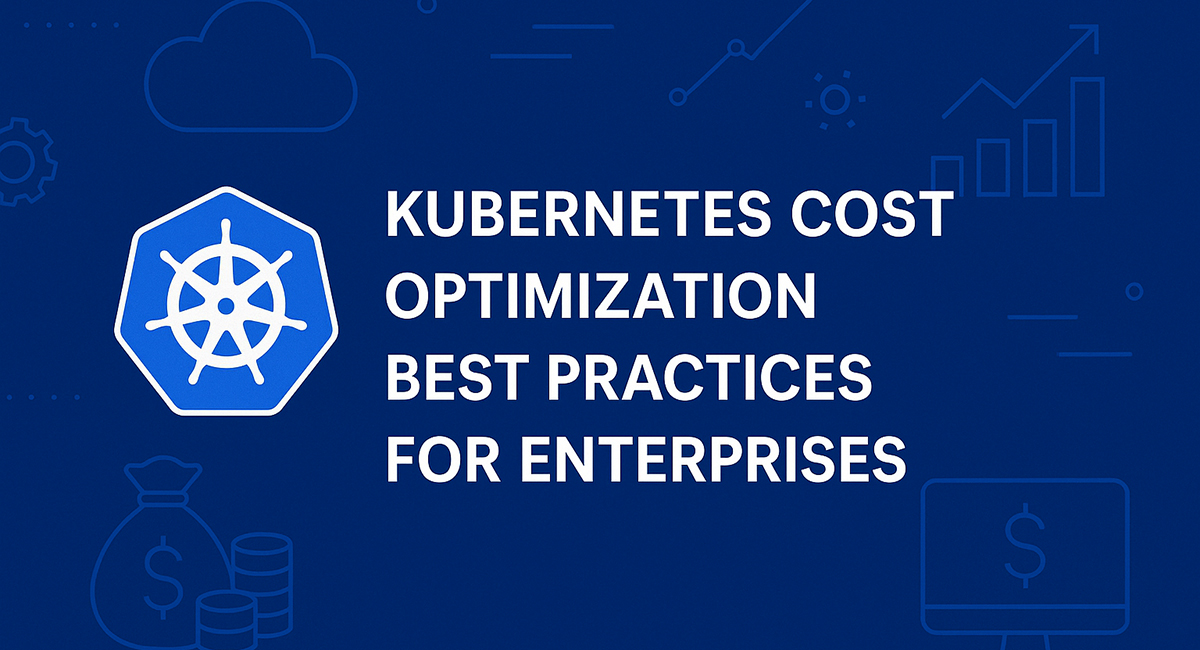No products in the cart.
 Introduction
Introduction
Kubernetes has significantly advanced infrastructure deployment practices, enabling exceptional scalability and adaptability across diverse environments. But with this power comes the risk of runaway costs. As organizations shift to containerized environments, they often find scaling Kubernetes easy—but scaling it cost-effectively is another story. Given the current emphasis on operational efficiency, optimizing Kubernetes expenses is now a critical component of strategic IT planning.
Why Kubernetes Costs Spiral Out of Control
Kubernetes simplifies provisioning—spinning up pods and services is fast. But that simplicity hides inefficiencies: unused dev environments, oversized workloads, and orphaned services drain budgets silently. As clusters grow, these inefficiencies scale too—turning minor leaks into major financial sinkholes.
Understanding the True Costs
Cloud bills only reveal surface-level expenses like CPU and memory. But the real costs include over-provisioned pods, idle nodes, misconfigured workloads, and the human labor spent debugging instability. At scale, even tiny inefficiencies multiply across thousands of deployments, inflating costs and diminishing value.
Top Cost Drainers in Kubernetes Environments
- Idle Pods and Over-Provisioning: Unused pods and underutilized nodes consume resources with no ROI. A lack of optimized bin-packing and scheduling logic will inevitably lead to excessive infrastructure utilization and operational inefficiency
- Storage & Networking Waste: Over-specified IOPS, redundant volumes, and excessive data egress charges add up. These issues are subtle and often overlooked until the bill arrives.
- Inefficient Container Images: Bloated images slow deployments, increase bandwidth usage, and consume more compute. Poor image hygiene—like outdated base layers or unused packages—leads to recurring waste.
Visibility: The First Step to Optimization
You can’t cut what you can’t see. Native Kubernetes tools lack cost transparency, making observability platforms essential. Tools like KubeCost, Prometheus, and Grafana tie resource use to dollar values, enabling smarter decisions. With real-time metrics, teams can prevent inefficiencies before they grow.
Right-Sizing Workloads Intelligently
Most applications request more CPU or memory than needed. Track actual consumption patterns and modify resource allocations accordingly to ensure balanced and efficient operations. Right-sizing improves utilization and reduces waste. Automation tools like Horizontal Pod Autoscaler (HPA) and Cluster Autoscaler streamline this process. Advanced options like KEDA scale workloads based on external triggers, allowing precise resource management.
Fostering a Cost-Conscious DevOps Culture
Optimization isn’t just a tooling issue—it’s cultural. FinOps practices embed financial accountability into engineering. When developers understand the cost of over-provisioning, they become more intentional with resources. Aligning finance and engineering through shared goals, budgets, and reviews ensures long-term cost control.
Smarter Compute Choices: Spot Instances & Preemptible VMs
Spot instances and preemptible VMs offer big savings for non-critical workloads. Use them for stateless services or batch jobs that can tolerate interruptions. To avoid risks, add resiliency—implement retries, use queues, and keep state off-cluster. Node taints and tolerations help segregate spot workloads from critical tasks.
Cost Strategies Across Multi-Cluster and Multi-Cloud Setups
In some cases, splitting workloads across clusters reduces egress fees or satisfies compliance needs. But managing multiple clusters requires robust monitoring to avoid duplicated costs. Likewise, using a mix of cloud providers can reduce costs, but only with careful workload mapping and architecture planning.
Governance and Policy Enforcement for Cost Control
- Admission Controllers: These tools gate workloads before they hit the cluster, rejecting over-provisioned or non-compliant deployments.
- Namespace-Level Budgets and Quotas: Enforce per-team or per-project caps to promote ownership. When teams know their limits, they plan better and deploy smarter.
Real-World Wins with Kubernetes Cost Optimization
One fintech company cut costs by 35% after implementing KubeCost and enforcing right-sizing policies. A SaaS provider slashed idle pod expenses using autoscaling and spot infrastructure. These success stories prove that with visibility, policy, and culture change, meaningful savings are within reach.
Lessons Learned
Start with visibility, then move to automation and enforcement. Avoid overly rigid automation without human context—balance is key. Remember, optimization isn’t a one-time fix. It’s an ongoing discipline.
Ensure Peak Performance, Always.
Partner with actsupport for expert Application Maintenance and Support Services that keep your systems running smoothly and securely 24/7.
Conclusion
Kubernetes isn’t inherently expensive—it’s just easy to mismanage. At scale, cost optimization requires observability, smart automation, cultural buy-in, and strategic governance. Teams that embed cost efficiency into their DevOps DNA will unlock the full potential of Kubernetes—scaling with speed, stability, and financial sanity.
Stay updated! Follow us on social media! Facebook, Twitter, LinkedIn
Check out our newest blog entry (The Future of IT: Building a Resilient Hybrid Cloud Strategy)
Subscribe to get free blog content to your Inbox


